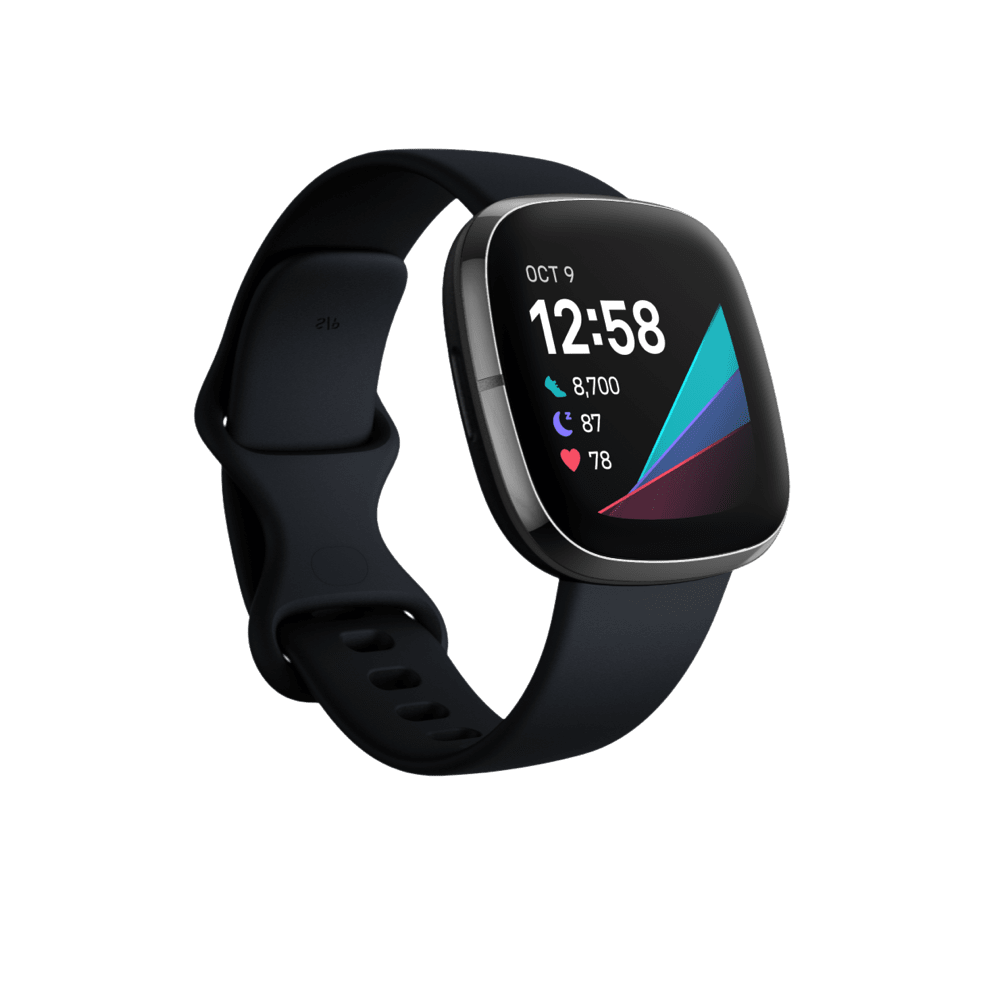My On-the-Run Voice Notes Revealed the Mental Illness That Had Been Running My Life
Editor’s note: This story discusses death by suicide.
When my running watch received an update featuring voice note capabilities, I was thrilled. I was also clueless that my trusty piece of gear would go on to reveal more than my cadence, speed, and pace-per-mile. As it soon turned out, my running watch, with its voice note capabilities, would expose a silent mental illness that had been, completely unbeknownst to me, running my life.
I had run for pleasure on and off since high school, and I always declared it “my anti-anxiety, anti-depression, and anti-constipation solution.” Living in New York City after graduating from college, I crushed my regular four-to-six mile loops at a 7- to 8-minute mile pace with ease, and I hated the days when my body demanded a rest.
Most days, my runs inspired more ideas than I knew what to do with. To remember them, I’d use a memory technique called the chain linking method, where you use your imagination to create a vivid mental story, pairing each word with an image and linking them together like a chain. I’d run down the street grinning, playing air guitar, and repeating to myself this fantastical storied list of work and life’s to-do’s. Once home, I’d immediately write it all down and bang them out before I could get myself to shower.
For a few years, my social, business, and personal life were thriving. But in the spring of 2019, on the tail end of getting married, finishing my first book, and losing my mother-in-law to cancer, life started to feel overwhelming. I kept our blinds closed 24/7 in an attempt to shut out the world. Around the same time, I decided I’d had it with the concrete jungle, and my husband and I moved onto five acres of woods an hour north of Manhattan in Pound Ridge, New York.
When we finally got settled in our new house encased in foliage, I ventured out on new running routes. It’s hilly out here on our country roads, so I found the flattest route, but even still my body felt like I was running through raw, organic, fair-trade honey. After trying for a few weeks, I couldn’t even finish three miles—a far cry from my easily finished 4- to 6-mile loops in the city. I ached. I felt discouraged. I bought a Peloton. Guess these country roads are just too hard for me, I declared, as I tried to convince myself that I fancied riding a stationary bike in my basement for the next six months.
In the spring of 2020, after riding indoors for four months, my body and mind were in desperate need for fresh air. As shelter-in-place restrictions became concrete due to COVID-19, I realized that running—from a safe distance away from people—could be my loophole. I resolved to make it up and down those country roads.
“Running became the way I got energy versus the way I burned the excess off.”
That was when I noticed that, during my winter hibernation, my watch had gotten an upgrade with voice memo capabilities. Neat! I thought. Now I can put that memorization puzzle to rest.
But I didn’t have those fantastic work and life ideas to capture on my runs anymore; rather, my mind was numb. I was so focused on trying to survive those steep climbs that I was slow to notice when running became the way I got energy versus the way I burned the excess off. All of a sudden, runs were my life-line, the highlight of my day. Afterward, my day went downhill from there. Those 30 to 60 minutes were the closest I could feel to being the old me, but even during that semi-high, I still wasn’t even close to what I once had been.
Determined to fix my slump, I assembled a solid squad of life coaches, business gurus, and therapists. I re-read my thrice underlined self-help books about discipline, willpower, and limiting beliefs. On runs, I’d try to intentionally embody the former Talia on the Williamsburg Bridge spitting out dad jokes at strangers while keeping a 7:38 pace, with multiple business ideas running through my head. But this time, there was nothing. I kept planting one foot in front of the other, but I couldn’t light the spark. Instead, I’d come home and cry and sleep all day, letting work slip through the cracks.
After months, summer came and the darkness lifted. I gained more pep in my step. I started actually coming up with ideas again while running. On some runs, these bursts of brilliance would come out of my mouth and into my watch recorder every mile. I set up a system of dictating my voice notes into a document over my post-shower, post-workout smoothie, transcribing them all into one giant list.

But something weird would happen. Listening to my own voice notes, I felt like I was listening to a stranger. The post-run Talia felt totally disconnected from the bubbly, hopeful, optimistic, and creative person in the audio.Running Talia had this big, bold idea to send the newly-vegan Lizzo a copy of her plant-based cookbook. She dictated the entire introductory note on her run. But Real-Life Talia was unable to drive the 600 feet to the post office.
This separation between Real-Life and Running Talia started growing greater and more obvious. Running Talia was free, expansive, confident, creative, ambitious, alive. Real-Life Talia was fearful, weak, irritable, isolated, disassociated.
Of course, at home, my husband only saw the latter. He eventually pointed out that excessively crying while being apathetic to living wasn’t normal. I asked how one couldn’t be expected to cry all day, hate themselves, and wish they could die when they’re unable to do anything. But he was burnt out from talking me off daily ledges, and I knew he at least deserved better, so I scheduled an appointment with a psychiatrist with whom I shared these true feelings.
Running was the lens through which I communicated about my problems with my doctor. I told her about Running Talia vs. Real-Life Talia—about how they used to be the same enthusiastic, energetic, capable, and creative gal, but had since become strangers to one another. About how I would have what seemed like thousands of new dreams and ideas, but then get too crazed to execute on them.
But mostly, and painfully, I spoke about my voice memos. I told her that like runners can track their distance and pace, I can track my mood and energy. And both change—a lot.
When, after two long sessions, the psychiatrist diagnosed me with bipolar II, every piece of my proverbial puzzle came together. I liken it to when we find out in The Sixth Sense that Bruce Willis was dead the whole time, and it all makes sense in retrospect. Bipolar II, according to the Diagnostic and Statistical Manual of Mental Disorders (DSM 5), is “characterized by … persistent pattern of unpredictable mood changes and fluctuating, unreliable interpersonal or occupational functioning.”
Without my bipolar II diagnosis, I’d been looking at myself wrong the whole time. I’d thought I was the problem, not my biochemicals.
“Running is my road to hope. Akin to—but not in lieu of!—medicine, running stabilizes me.”
When I explained this to Michal Frankel Rosenthal, LCSW, a New-York based therapist who helps people with mental health issues, such as bipolar disorder, she said, “There isn’t a lot of talk about bipolar II, yet there are so many people who have this going on but have no clue, and either think they’re nuts or are told they’re nuts. But finally knowing what it is can be eye-opening and soul-saving.”
I’ve found that running helps to equalize my brain. On days when my mind and body are exploding with nine thousand of the best ideas ever, running can calm me by giving me an outlet for my excess energy. And when I’m so depressed that writing an email feels impossible, running reminds me that there’s a life outside my bed. Yes, I know that for some with depression, the idea of exercise seems as absurd as trampolining to the moon, but for me, running is a loophole with my depression.
“For most people with bipolar II, the down is the bigger problem,” Rosenthal explained. “They enjoy the up because the up feels good because there’s more time spent in the down. And the problem is that there isn’t a time period associated with the down—no one can tell you how long it’s going to last, and they’re not equal periods of time. So the focus is how to get people through the descending phases and feel intact and hopeful.”
Running is my road to hope. Akin to—but not in lieu of!—medicine, running stabilizes me. It helps me reach the middle me: the True Talia that lives between the throes of her brain chemistry’s flip flops of hypomania and depression.
But for so long, I hadn’t been able to perfectly peg why me while running differed so drastically from me not running. And it turns out that by going all Mindhunter on my sweaty self, I unlocked the answer to a problem that plagued me for half my life, likely tormented generations of family members before me (according to my dad), and, according to the National Institute of Mental Health, affects an estimated 4.4 percent of U.S. adults: bipolar disorder.
I’m learning to embrace my diagnosis, understand it, get the hang of it, and break it in like a new pair of Nikes. And though it’s weird, hard, frustrating, embarrassing, disappointing, challenging, and scary at times, I ultimately see my diagnosis as a gift.
I’m so grateful that, while medication’s helping me smooth out the ups and downs of my bipolarity—manage the “peaks and the pits,” as Rosenthal describes it—my sneakers can always be a trusted straight shot to my truest self. Meds and running are my dream team, carrying me to the best place I’ve been in many years. And to now be able to deeply understand the woman behind the voice I hear in my notes is definitely a new kind of runner’s high.
Smart Watches With Built-In Wellness Apps




From: Runner’s World US
Source: Read Full Article


